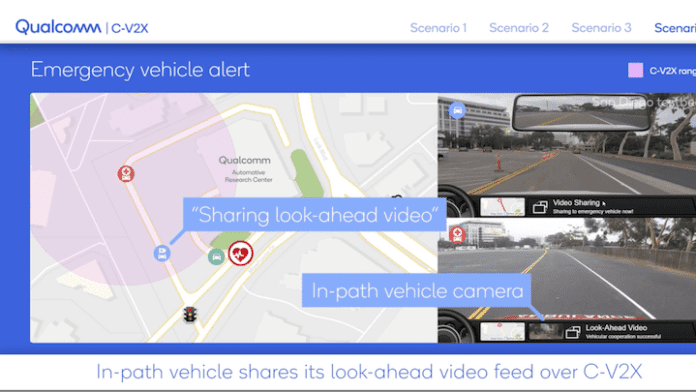Colorado volunteers to be the C-V2X guinea pig with the goal of becoming crash-free through technology.
Qualcomm Technologies, Ford Motor Company and Panasonic Corporation of North America announced today that they will work together to deploy a cellular vehicle-to-everything (C-V2X) technologies in Colorado. This is the first U.S. deployment of C-V2X technology.
3rd Generation Partnership Project (3GPP) developed C-V2X to operate with advanced driver assistance systems (ADAS) — radar/lidar, cameras — which are in many cars today. C-V2X is supposed to offer low latency communication among moving vehicles and infrastructure, without involving a cellular network or subscription. C-V2X operates on designated and harmonized 5.9 GHz ITS spectrum.
“Recent field test results show a significant range, reliability, and performance advantage of C-V2X direct communications, with more than twice the range and improved reliability compared to 802.11p radio technology,” says today’s press release.
The Colorado Department of Transportation (CDOT) and Panasonic already established a relationship to integrate connected vehicle technology in the state of Colorado. The plan is all under the auspices of RoadX, Colorado’s ambitious goal to become crash-free through technology.
How it will work: CDOT has a fleet of Ford vehicles to which C-V2X devices will be added. The in-car devices include C-V2X onboard units (OBUs) from Ficosa’s CarCom platform. This platform enables vehicle-to-vehicle (V2V) and vehicle-to-infrastructure (V2I) direct communications, which are key components of C-V2X. The company Kapsch TrafficCom, which specializes in intelligent transportation systems for toll taking, traffic management, smart urban mobility, and connected vehicles, will provide roadside units (RSUs).
Panasonic’s connected vehicle data platform will be the conduit for the data flow between the car and the infrastructure (the RSUs). The platform takes the C-V2X data and sends it to the roadway operators “with improved situational awareness and a new ability to send safety critical information directly to vehicles,” according to a press release.
The first live iteration will occur at Panasonic’s CityNOW headquarters in Denver. Later in the year, CDOT plans to launch the system in limited areas along the I-70 Mountain Corridor.
Qualcomm announced that its first C-V2X chip will become available later this year. C-V2X is key to the self-driving car, says Qualcomm in a blog. Presumably Qualcomm’s chips will be in some, if not all of the devices powering the C-V2X experiment.

